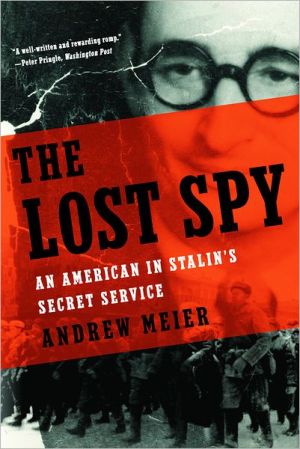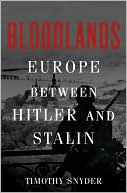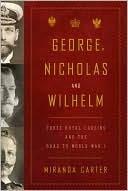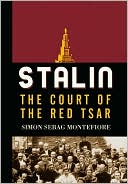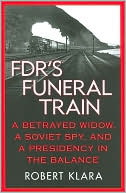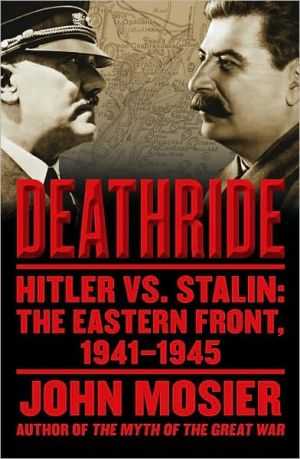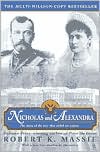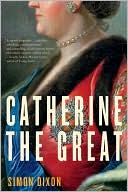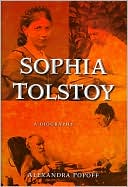The Lost Spy: An American in Stalin's Secret Service
“Utterly fascinating, a sad and sinuous study.”—Richard Schickel, Los Angeles Times\ For half a century, the case of Isaiah Oggins, a 1920s New York intellectual brutally murdered in 1947 on Stalin’s orders, remained hidden in the secret files of the Soviet and American intelligence services—a footnote buried in the rubble of the Cold War. It surfaced briefly in 1992, when Boris Yeltsin handed over a dossier to the White House, but the full story of what happened remained a mystery. After...
Search in google:
“Utterly fascinating, a sad and sinuous study.”—Richard Schickel, Los Angeles Times The Washington Post - Peter Pringle The Lost Spy is a valiant effort, a well-written and rewarding romp through the international communist movement of the 1920s and '30s. The book's jacket suggests that it "will rewrite the history of Soviet intelligence in the West." There are too many blanks for that, but Meier reaches an intriguing conclusion: Oggins was arrested because his minder tried to quit. His cell was "rolled up," as spies say, and Oggins was murdered because he knew too much about Soviet spy rings abroad. It seems the most plausible explanation. But for all Meier's dogged sleuthing (and I look forward to his next casebook), the full story of this lost spy remains in the shadows.
Arrest 3Ch. 1 "The American Professor" 7Ch. 2 Thread City 17Ch. 3 War 27The Lubyanka: 1939 43Ch. 4 Revolution 53Ch. 5 Into the Night 75Ch. 6 A Change of Sky 99Gulag: 1940 129Ch. 7 The Red and the White 143Butyrka: 1942 169Ch. 8 Journey to a War 189Ch. 9 The Stamp Market 225Ch. 10 Truth Will Win 241Execution 269Ch. 11 The Note to Stalin 273Ch. 12 Afterlife 289Acknowledgments 301Appendix Archival Documents 309Notes 321Bibliography 361Credits 382Index 383
\ Washington PostA well-written and rewarding romp through the international communist movement of the 1920s and ’30s.— Peter Pringle\ \ \ \ \ Peter PringleThe Lost Spy is a valiant effort, a well-written and rewarding romp through the international communist movement of the 1920s and '30s. The book's jacket suggests that it "will rewrite the history of Soviet intelligence in the West." There are too many blanks for that, but Meier reaches an intriguing conclusion: Oggins was arrested because his minder tried to quit. His cell was "rolled up," as spies say, and Oggins was murdered because he knew too much about Soviet spy rings abroad. It seems the most plausible explanation. But for all Meier's dogged sleuthing (and I look forward to his next casebook), the full story of this lost spy remains in the shadows.\ —The Washington Post\ \ \ Publishers WeeklyFormer TimeMoscow correspondent Meier (Black Earth: A Journey Through Russia After the Fall) tells a remarkable story about Cy Oggins, a Columbia University undergraduate who joined the fledgling Communist Party in 1920. Recruited by Soviet intelligence in 1926, he went to Europe in the guise of an academic; his residences acted as centers for Soviet espionage. After 1930 he sailed to China and Manchuria for various undercover schemes, then traveled to Moscow in 1939 during Stalin's purges. Despite long, loyal service, he was arrested and sent to an Arctic gulag and despite frantic pleas for Oggins's release from his wife, and more modest U.S. government efforts, the Soviets murdered Oggins in 1947 to keep his story from getting out. In Soviet archives, Meier saw a heavily censored fraction of Oggins's 162-page file, supplemented by the FBI's massive records, compiled thanks to J. Edgar Hoover's lifelong fixation on Communists. These files plus the author's extensive research have produced a rich account of American communism's early years as well as the bizarre, tragic odyssey of an American who devoted his life to serving the U.S.S.R. 16 pages of illus. (Aug. 11)\ Copyright © Reed Business Information, a division of Reed Elsevier Inc. All rights reserved.\ \ \ \ \ Library JournalJournalist/historian Meier (Black Earth) draws a well-written, comprehensive portrait of the life of American-born Soviet operative Isaiah "Cy" Oggins. He uses interviews with Oggins's American son, U.S. diplomatic and intelligence files, and an abridged copy of Oggins's KGB/Soviet archive file to inform his study while proposing intelligent scenarios for the story's undocumented and shadowy periods. Actor/narrator David Chandler (Copper River) gives a clear and articulate reading, especially when the narrative's complexity and shifting time lines require heightened listener concentration. A great addition to nonfiction collections. [With tracks every three minutes for bookmarking; the Norton hc was "highly recommended," LJ4/1/08.-Ed.]\ —Kristen L. Smith\ \ \ \ \ \ Kirkus ReviewsTime magazine's former Moscow correspondent profiles an American who traveled the world gathering intelligence for the Soviet Union, until he was swept up in Stalin's purges. Meier (Black Earth: a Journey Through Russia After the Fall, 2003, etc.) unravels an amazing story. The son of a prosperous Russian immigrant, Cy Oggins entered Columbia University in 1917. A brilliant scholar, he was swept up in student opposition to World War I and shared his left-wing peers' fascination with Russia's communist revolution. Thanks to J. Edgar Hoover's obsession with subversion, undercover FBI surveillance, wiretaps and mail intercepts preserve a detailed account of American communism's turbulent birth, in which Oggins and his wife Nerma played a modest role. Meier reminds us that Lenin's USSR was equally obsessed with subversion, quickly organizing an elaborate, worldwide system of spies, moles, couriers and assassins. Recruited to this network in 1926, Oggins never spied against the United States. Soviet intelligence assigned him the cover role of a prosperous American scholar studying abroad; his residence served as a safe house for its spies. Oggins later traveled to China and Manchuria to work on various espionage schemes. But faithful service did not save him from Stalin's paranoia about anyone who had contact with foreigners, which devastated the Soviet intelligence service in the late '30s. Thousands of loyal agents were summoned to Moscow and executed or dispatched to the Gulag. Arrested in 1939 and sent to an arctic slave-labor camp, Oggins had a damaged leg that saved him from the most grueling jobs; he survived until 1947. Meier tells the painful story of his final years and Nerma'sdesperate efforts to secure his release. Gripping tale of a 1920s American radical who ultimately paid a terrible price for his idealism.\ \
